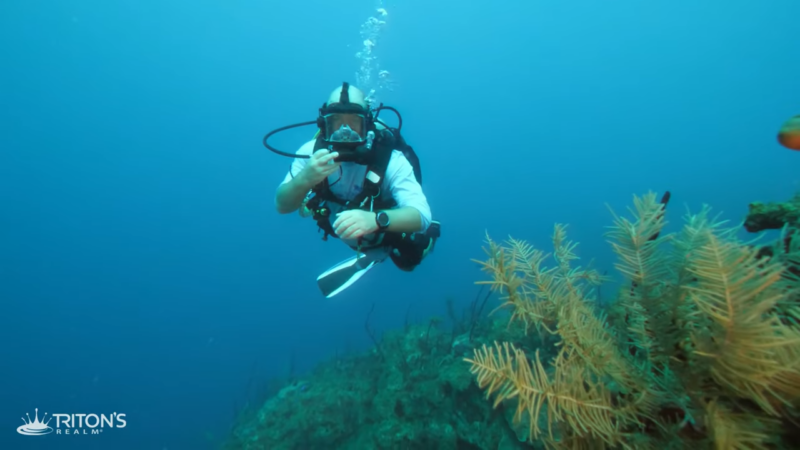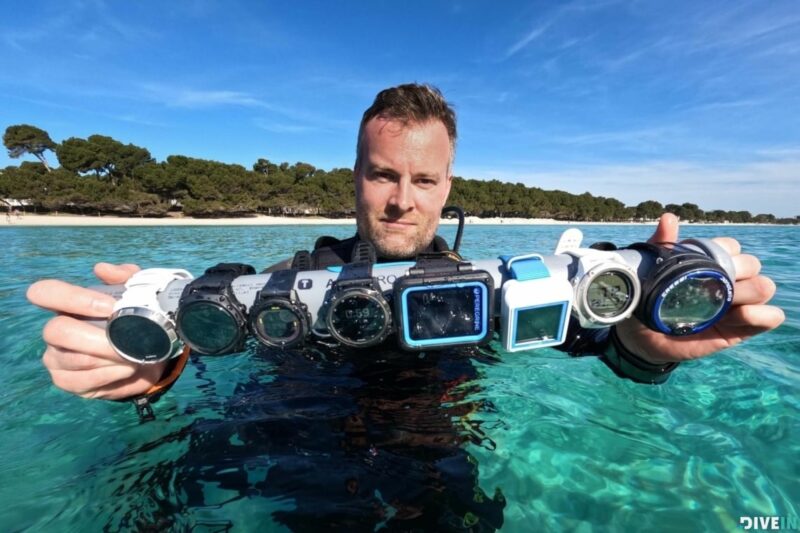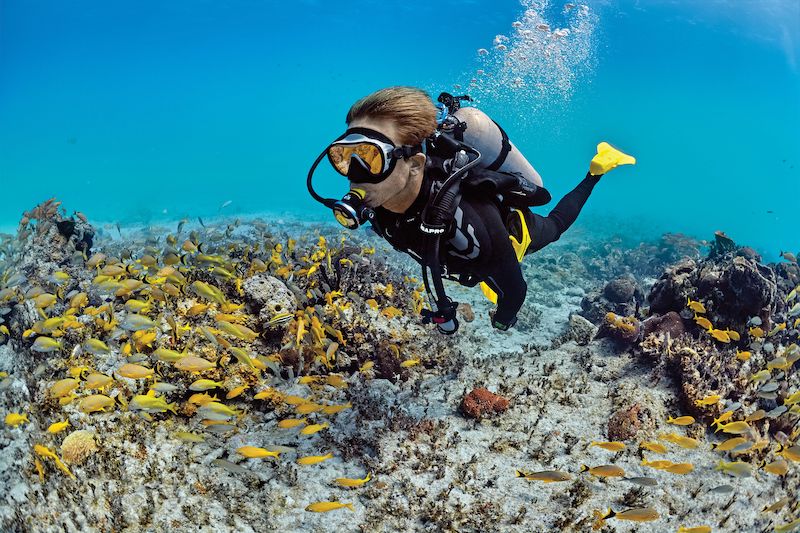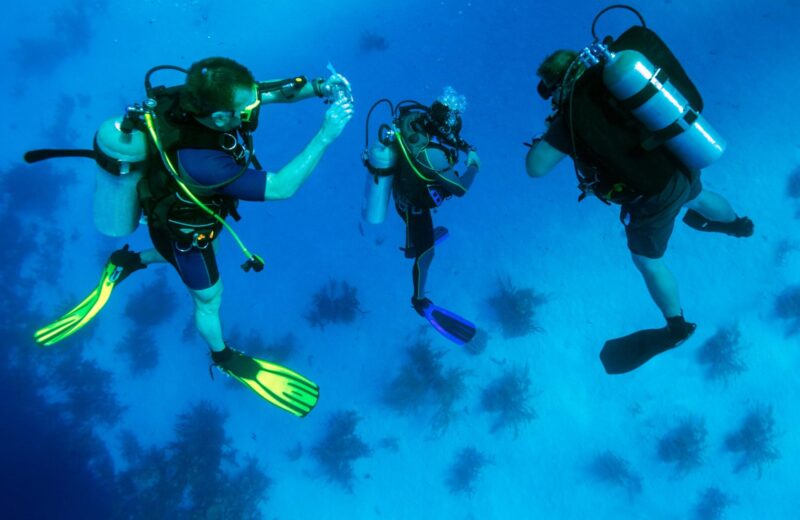Scuba diving, a sport revered by thrill-seekers, nature enthusiasts, and scientific researchers alike, continually evolves as cutting-edge technologies redefine its landscape. Innovations in diving accessories not only enhance the diving experience but also contribute significantly to the safety and efficiency of dives. As we embark on this exciting journey into the depths of the ocean, let’s uncover how staying abreast with these advancements could transform your next underwater adventure.
Full Face Masks with Integrated Communication Systems

One revolution in the diving world has been the introduction of full-face masks with built-in communication systems. Traditionally, communicating underwater was largely limited to a series of standardized hand signals. The advent of these integrated communication systems has, however, ushered in a new era in underwater communication, greatly improving safety and coordination among divers.
Full-face masks cover the entire face, allowing divers to breathe naturally through both the nose and mouth. The masks also often come with a built-in regulator and help prevent jaw fatigue caused by gripping onto traditional snorkels. The icing on the cake, however, is their ability to support integrated communication systems.
Underwater communication devices, connected to the mask, allow divers to communicate verbally, dramatically enhancing underwater interaction. Whether it’s safety commands, dive plans, or the sheer thrill of sharing real-time experiences, these devices have redefined underwater communication. The recent introduction of digital, wireless systems has further improved audio clarity, range, and battery life, making the underwater experience more immersive and interactive.
Closed-Circuit Rebreathers (CCR)

Closed-Circuit Rebreathers (CCRs) represent another significant stride in scuba diving technology. Unlike traditional open-circuit systems that expel exhaled gas into the water, CCRs recycle it. After removing carbon dioxide and replenishing oxygen, CCRs allow divers to re-breathe the cleaned gas. This technology offers numerous benefits, such as improved gas efficiency and extended dive times.
The ability of CCRs to provide a near-constant oxygen partial pressure enhances safety, with the system adjusting the oxygen concentration based on the diver’s depth. This feature minimizes decompression obligations and substantially reduces the risk of oxygen toxicity. Today’s CCRs come with advanced features like automated setpoint controllers, sophisticated dive computers, and redundancy systems, ensuring a safe and memorable diving experience.
Compact Dive Computers
In the past, divers had to rely on printed dive tables and manual calculations to manage their dive profiles. Thanks to the advent of compact dive computers, those days are long gone. These devices not only monitor depth, bottom time, and ascent rates, but also perform real-time calculations to manage nitrogen absorption and off-gassing in the diver’s body.
The latest dive computers feature high-resolution color displays, user-friendly interfaces, and customizable settings. Many are also integrating digital compasses, air integration, heart rate monitors, and wireless data transfer capabilities. With their help, divers can now obtain essential dive data at a glance, maximizing both safety and enjoyment.
Underwater Drones
The use of drones isn’t limited to aerial photography and delivery services; it has also penetrated the underwater realm. Underwater drones, also known as ROVs (Remotely Operated Vehicles), are transforming scuba diving, offering divers a new means to explore underwater ecosystems.
Equipped with powerful cameras and LED lights, ROVs allow divers to scout areas before diving, survey inaccessible regions, or simply capture stunning underwater footage. They are controlled using handheld remote devices or smartphone apps, with advanced models offering GPS and sonar capabilities, depth and temperature sensors, and powerful thrusters for strong current conditions. Their potential applications are broad, from marine research and commercial inspection to recreational use, making them a must-have accessory for modern divers.
Lightweight and Flexible Dive Gear

Today’s diver is not encumbered by the heavy and rigid gear of the past, thanks to innovations in materials and design. Buoyancy Compensator Devices (BCDs), wetsuits, fins, and masks have all been revolutionized to offer greater comfort, freedom of movement, and durability.
Modern BCDs, for instance, are made from advanced, lightweight materials, provide better weight distribution, and are designed for a closer fit. Wetsuits and drysuits, meanwhile, are made from flexible, insulating materials, offer excellent thermal protection, and are tailored for a snug fit. Recent fins designs feature adjustable straps, comfortable foot pockets, and flexible blade materials to optimize propulsion. Masks now boast silicone skirting for a better fit and softer touch, along with anti-fog treatments for clearer vision. These improvements have made diving gear more user-friendly and comfortable, leading to longer, safer, and more enjoyable dives.
Enhanced Underwater Lighting Systems
As divers explore the ocean’s depths, the need for reliable and efficient lighting is paramount. LED technology has transformed underwater lighting systems, offering brighter lights, adjustable beam angles, and longer battery life in compact designs.
Modern dive lights now feature variable power outputs and multiple beam angles, allowing divers to customize lighting based on their needs. High-capacity rechargeable batteries offer extended run times, while sturdy, corrosion-resistant materials ensure durability. Some dive lights even include colored LED arrays to enhance color rendering and improve underwater photography. These advancements have illuminated the underwater world like never before, unveiling the mesmerizing beauty of the ocean’s depths.
Smart Watches for Underwater Use
Imagine having a sophisticated dive computer on your wrist, offering all necessary information at a glance. That’s what the latest smart watches for divers, such as the Suunto D4i model you can find at scubagaskets.com, provide. These devices track depth, dive time, temperature, and ascent rates, alongside other features like GPS and compass functionalities.
Apart from these, these smart watches also connect wirelessly to smartphones and tablets, allowing divers to sync their dive logs, view dive profiles, and share their experiences on social media. The apps also provide weather updates and dive site information, making them a versatile companion for any diver.
Integrated GPS and Dive Log Apps
Navigation underwater can be a challenge due to poor visibility and the absence of familiar landmarks. But with integrated GPS capabilities in dive computers and companion mobile apps, divers can now navigate underwater with greater ease.
These GPS-enabled devices provide real-time location tracking and waypoints, ensuring divers can always find their way back to the starting point. The GPS data can also be synchronized with dive log apps, providing a complete record of the dive, including the dive profile, dive site location, and underwater images.
High-Resolution Underwater Cameras

Underwater photography and videography have seen significant advancements, with high-resolution cameras, compact housings, and features like image stabilization, 4K video recording, and RAW image capture. These cameras are not only providing crystal-clear images but also enabling professional-grade photography even at recreational diving depths.
Some cameras also feature built-in color correction filters and powerful flashes to address the unique lighting challenges underwater. Their user-friendly interfaces and seamless integration with dive computers are ensuring that capturing and sharing underwater memories is easier than ever before.
Sustainable and Eco-Friendly Dive Accessories
The scuba diving industry has also joined the global drive towards sustainability, with a growing trend of eco-conscious dive accessories. Biodegradable dive weights, eco-friendly dive gear materials, and sustainable manufacturing practices are all contributing towards reducing the environmental impact of diving.
These innovations are not only enhancing the diving experience but also ensuring that our love for the ocean doesn’t harm its delicate ecosystems. This alignment of passion and responsibility is a testament to the power of innovation, not just in improving experiences, but also in protecting our natural world.
Conclusion
As we have explored, the world of scuba diving is evolving at a rapid pace. The integration of technology into diving gear is enhancing safety, comfort, and overall enjoyment. So whether you are an experienced diver or just getting started, embracing these innovations will undoubtedly enrich your underwater adventures.

